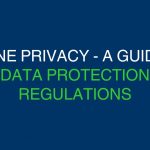Creativity is a powerful currency and online is a fertile ground for innovation and entrepreneurship. A new economy has flourished — the Creator Economy. Individuals harness the opportunities of the digital world to monetize their talents, ideas, and influence, crafting unique niches and building substantial wealth. In this world, the digital identity is not just important but is pivotal, acting as the cornerstone of one’s online real estate.
But the digital identity system is also the Achilles heel of the ecosystem. When the authentication systems fail, it can crush dreams and businesses. Recent unsettling breaches involving key providers such as Okta and LastPass ring alarming bells. The very id system entrusted with the security of the digital realms where digital business thrives showed signs of weakness. These incidents are threats that shake the foundational trust so important online.
In this blog I’m exploring the significance of breaches on digital identity management systems, evaluating their impact on content creators and other individuals who leverage online to build and manage wealth. I also explore what actions the players of the digital economy can take to safeguard their digital identities and limit the exposure to risk associated with identity fraud.
The Landscape of Vulnerabilities and Their Real-World Impacts
The Creator Economy provides a mosaic of opportunities to digital entrepreneurs, artists, and social media influencers but, unfortunately, also exposes them to a wide variety of cybersecurity threats. The digital assets — be it in the form of exclusive content, valuable intellectual properties, or cryptocurrencies are shiny treasures in the vast, chaotic, and often merciless cyber world. Identity verification and authentication mechanisms are gatekeepers, meant to control access and protect digital assets and services.
But what happens when the guardians falter? Uncertainty, risk, and potential chaos follow. The security incidents affecting Okta and LastPass, and their long tail effects unveil critical vulnerabilities at the heart of our digital id system. Okta and LastPass stand as significant players in digital identity management, facilitating secure access to various applications and services. Okta operates as an identity and access management service, providing a cloud-based solution to manage user identities and ensure the right individuals have access to the correct resources. LastPass, on the other hand, is a widely used password manager that stores encrypted passwords online, allowing users to have unique, strong passwords for every service they use without the need to remember each one.
Okta’s breach involved a compromise of a third-party customer support engineer’s account, potentially exposing sensitive information and leading to questions about the effectiveness of the company’s internal security measures and the integrity of authentication protocols. Similarly, LastPass suffered a breach where unauthorized parties gained access to customer data by compromising a developer’s account, underscoring the critical need for stringent security practices even within the tools designed to protect digital identities.
The direct consequences are the loss, theft, or unauthorized access to digital assets—cryptocurrencies vanish, exclusive content may be distributed without consent, and intellectual properties can be violated and exploited. But there’s a subtler, more insidious impact — the erosion of trust. For the players in the digital economy, trust is a currency as crucial as the tangible assets they own. Identity theft shatters that confidence, making them question the reliability of the platforms and tools that are intrinsic to their creative and financial endeavors.
The Imperative of Robust Authentication in Protecting Digital Assets
In a world where creativity and digital innovation are of immense value, safeguarding digital assets becomes the pivot around which the wheel of success revolves. As pillars in the realm of digital defense, digital identification providers play a pivotal role, but as we’ve seen, they’re not invulnerable. So, what does this mean for content creators and solopreneurs deeply entrenched in the fabric of the digital economy?
- Authentication as the First Line of Defense: For creators, no matter which social media you’re focused on, your digital it is the key to your audience. It’s the initial protective layer, safeguarding assets and your channel(s) from unauthorized access and potential exploitation.
- Multi-Factor Authentication (MFA): MFA acts as a multi-layered shield, an enhancement to password protections. Utilizing multiple verification methods, it adds complexity to the access protocols, safeguarding assets even when passwords are compromised.
- Customization and Control: Enhanced authentication mechanisms offer the flexibility of customization. Creators and high-income individuals can tailor security protocols, ensuring a personalized defense strategy aligned with specific security requirements and asset profiles.
- Continuous Adaptation: The digital battlefield is in constant flux, and adaptability is crucial. Authentication protocols must evolve, adapt, and be resilient to the emerging threats and sophisticated attack strategies unveiled continuously in the cybersecurity landscape.
- User Experience: A balance is essential. Robust authentication should not be a labyrinth. It must be user-friendly, ensuring that security does not come at the cost of accessibility and ease of use, especially pivotal for creators who require seamless interactions and transactions.
In forging ahead, creators and high-income individuals must be equipped with robust, adaptable, and resilient authentication strategies that act as vigilant guardians of their digital realms. It’s not just about preventing unauthorized access; it’s about building fortresses that are both impervious to threats and conducive to creative and financial flourishing.
Navigating failure: Lessons and Adaptations from Breaches
Security breaches in digital identity systems, despite their harsh impacts, are invaluable teachers. They expose vulnerabilities, providing insights necessary for fortifying defenses and enhancing resilience. There is also the opportunity to cultivate adaptable strategies that are attuned to the dynamic nature of cyber threats. A balanced approach, which tempers reliance on external id system providers with robust internal safeguards, is crucial. Continuous vigilance is necessary, coupled with proactive measures that anticipate potential threats and enhance resilience.
Learning from the Breaches
- Vulnerability is Universal: Even the most fortified realms aren’t bulletproof. Acknowledge the pervasive nature of threats and foster a culture of continuous improvement and adaptation in cybersecurity strategies.
- A Cascade of Consequences: Breaches (especially on digital identity management systems) aren’t isolated events. They trigger a cascade of consequences, compromising various facets of digital identities and assets. The interconnectedness of the digital world means that the ramifications can be extensive and multifaceted.
Adaptive Strategies for Enhancing Resilience
- Up-level Defenses: Adaptability should be the hallmark of your personal data protection strategies, ensuring that defenses are always aligned with the current threat landscapes.
- Balanced Dependence: While third-party authentication providers are essential, avoid over-reliance. Decentralized identity ensures that your digital security doesn’t hinge entirely on external platforms.
Proactive Measures for Enhanced Security
- Continuous Monitoring and Evaluation: Maintain an active role in monitoring and evaluating your digital footprint. Ensure that you are up-to-date on your digital credentials being affected by cyber breaches.
- Education and Awareness: As players in the Creative Economy, cultivating awareness and education amongst your team and the broader community is crucial. It empowers collective vigilance and proactive defense against identity fraud.
Future-Proofing: Strategies for a Resilient Identity in the Creator Economy
Looking forward, innovation must illuminate the path. Cutting-edge developments such as biometric verification, software and hardware tokens, and passkeys are enhancing digital identity verification. Community collaboration and continuous education also hold the keys to a secure future. By fostering communities that share knowledge, insights, and strategies, a collective defense mechanism evolves, enhancing the overall security landscape.
Harnessing Advanced Authentication Technologies
- Biometric Authentication: Leverage biometric verification mechanisms like fingerprint scans or facial recognition as an added layer of security. These features enhance authentication processes, making unauthorized access more challenging.
- Passkeys: Passkeys are a form of authentication that replace traditional passwords with cryptographic key pairs, providing a more secure and user-friendly way to access online services. They enhance digital authentication by making it virtually immune to phishing attacks and eliminating the need to remember complex passwords.
- Hardware/Software Tokens: Consider using tokens that generate time-sensitive codes. MFA (Multi Factor Authentication) complement the use of passwords, further solidifying your digital defenses.
Promoting a Culture of Cybersecurity Awareness
- Educational Initiatives: Invest in continuous learning and awareness programs. Empower your team and community with the knowledge to recognize and fend-off potential threats. Emphasize behavioral change as knowledge alone will not do the trick.
- Community Collaboration: Collaborate with others in the creators in your industry. Shared knowledge and strategies can bolster collective cybersecurity postures.
The Cybersecurity Compass in the Digital Age
The Creator Economy, with its boundless creativity and innovation, is a beacon of modern entrepreneurial spirit. However, for it to continue thriving, secure, reliable, and resilient identity verification systems are imperative. Enhanced authentication protocols, continuous improvement, and a commitment to innovation are the pillars upon which a secure digital environment can be established.
Creators, empowered with robust defenses, can then navigate the digital realms with confidence, ensuring that their valuable assets remain protected against the ever-present cyber threats. Thus, the Creator Economy can flourish, supported by a foundation of trust, reliability, and unwavering security.
Key Takeaways:
- Vigilance is Paramount: Continual awareness and updating of cybersecurity strategies are crucial. New threats emerge; our defenses must evolve concurrently.
- Authentication is Central: Strengthening digital identity proofing is not optional. It’s a central pillar in safeguarding digital assets and creative endeavors.
- Collaboration with Secure Platforms: Choose platforms that underscore security, especially in authentication, ensuring that your creative and financial assets are well-guarded.
- Education and Adaptability: The realms of technology and cybersecurity threats are dynamic. Continuous learning and adaptability are essential in navigating these terrains successfully.




